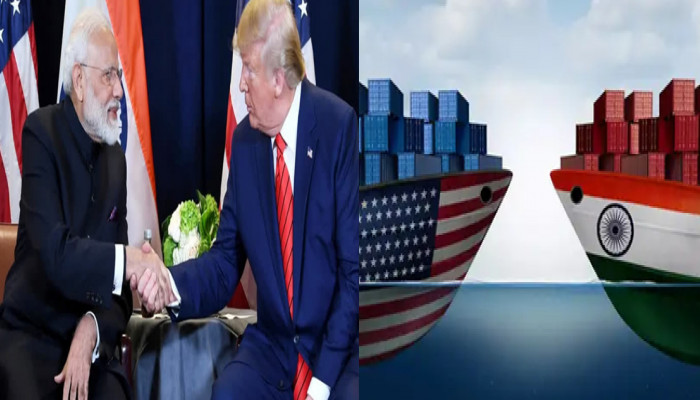India-US trade pact unveils 19 key chapters in proposed agreement
- In Reports
- 04:31 PM, Apr 19, 2025
- Myind Staff
India and the US have finalised the terms of reference (ToRs) for their proposed bilateral trade agreement, which includes about 19 chapters covering areas like goods, services, and customs facilitation, according to official sources.
To move the talks forward, an Indian official team will visit Washington next week to resolve any differences on specific issues before officially starting negotiations for the India-US Bilateral Trade Agreement (BTA). India's chief negotiator, Rajesh Agrawal, who is the Additional Secretary in the Department of Commerce, will lead the team for the first in-person talks between the two countries. Agrawal was appointed as the next Commerce Secretary on April 18 and will take office on October 1. "The three-day Indian official team's talks with the US counterparts in Washington will start from Wednesday (April 23)," the official said.
The visit, coming just weeks after a high-level US team visited India, shows that discussions for the BTA are moving forward. This visit follows talks held last month between senior officials from both countries. Brendan Lynch, the Assistant US Trade Representative for South and Central Asia, was in India from March 25 to 29 for important trade talks with Indian officials. Both sides are eager to take advantage of the 90-day tariff pause announced by US President Donald Trump on April 9. On April 15, Commerce Secretary Sunil Barthwal mentioned that India aims to wrap up negotiations with the US as soon as possible. He also confirmed that India has chosen to pursue a path of trade liberalization with the US. India and the US have been in talks since March to create a trade agreement, with the goal of completing the first phase of the deal by fall (September-October) this year. Both countries aim to more than double their bilateral trade to USD 500 billion by 2030, up from about USD 191 billion now.
In such a trade agreement, the two nations work to lower or remove customs duties on most goods traded between them. They also simplify rules to encourage trade in services and boost investments. The US is seeking duty reductions in areas such as certain industrial goods, electric vehicles, wines, petrochemical products, dairy, and agricultural items like apples, tree nuts, and alfalfa hay. On the other hand, India is considering duty cuts for labor-intensive industries like apparel, textiles, gems and jewellery, leather, plastics, chemicals, oilseeds, shrimp, and horticultural products. From 2021-22 to 2024-25, the US has been India's largest trading partner. The US makes up about 18% of India's total exports, 6.22% of its imports, and 10.73% of its total bilateral trade. In trade with the US, India had a goods trade surplus of USD 41.18 billion in 2024-25. This surplus was USD 35.32 billion in 2023-24, USD 27.7 billion in 2022-23, USD 32.85 billion in 2021-22, and USD 22.73 billion in 2020-21. The US has expressed concerns about the growing trade deficit.
On April 2, the Trump administration introduced significant tariffs, including a 26% tariff on India, to strengthen manufacturing, but this was later paused until July 9. In 2024, India's major exports to the US included pharmaceuticals (USD 8.1 billion), telecom equipment (USD 6.5 billion), precious stones (USD 5.3 billion), petroleum products (USD 4.1 billion), gold jewelry (USD 3.2 billion), cotton garments and accessories (USD 2.8 billion), and iron and steel products (USD 2.7 billion). On the other hand, India’s key imports from the US consisted of crude oil (USD 4.5 billion), petroleum products (USD 3.6 billion), coal (USD 3.4 billion), diamonds (USD 2.6 billion), electric machinery (USD 1.4 billion), aircraft and parts (USD 1.3 billion), and gold (USD 1.3 billion).







Comments